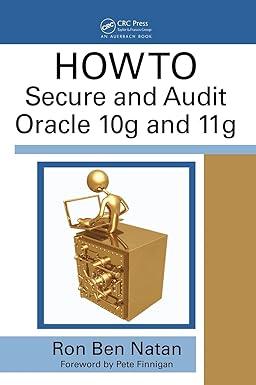Question
Jeremie and Patricia are married, file jointly, and have one dependent (12-year old qualifying child). Jeremie receives a $91,000 salary. Patricia is self-employed. Her sole
Jeremie and Patricia are married, file jointly, and have one dependent (12-year old qualifying child). Jeremie receives a $91,000 salary. Patricia is self-employed. Her sole proprietorship's revenues are $97,000, and its expenses are $44,000. Jeremie and Patricia each make a $6,000 deductible contribution to a traditional IRA. Their itemized deductions are $29,500. Federal income taxes of $6,800 are withheld from Jeremie's paychecks, and Patricia makes $3,300 of estimated tax payments.
(Click the icon to view the standard deduction and child credit amounts.)
(Click the icon to view the 2019 tax rate schedule for the Married filing jointly filing status.)Read the requirement
First, compute their gross income.
| Jeremie's salary | $91,000 |
| Patricia's gross income | 97,000 |
| Gross income | $188,000 |
|---|
Next, compute their adjusted gross income.
Options: Gross income; Minus: Business Expense; Minus IRA Contributions; Minus: Itemized deductions; Minus: Personal Exemption; Minus: Standard Deduction; Salary & Wages.
| Adjusted gross income |
|
|---|---|
| Filing Status | |
| Married individuals filing joint returns and surviving spouses | $24,400 |
|---|---|
| Heads of households | $18,350 |
| Unmarried individuals (other than surviving spouses and heads of households) | $12,200 |
| Married individuals filing separate returns | $12,200 |
| Additional standard deduction for the aged and the blind; Individual who is married and surviving spouses | $1,300* |
| Additional standard deduction for the aged and the blind; Individual who is unmarried and not a surviving spouse | $1,650* |
| Taxpayer claimed as dependent on another taxpayers return: Greater of (1) earned income plus $350 or (2) $1,100. |
|
| * These amounts are $2,600 and $3,300, respectively, for a taxpayer who is both aged and blind. | |
2019 Child Tax Credit =$2,000 per qualifying child
Married, Filing Joint and Surviving Spouse
If taxable income is:
The tax is:
Not over $19,400. . . . . . . . . . . . . . . . . . .
10% of taxable income.
Over $19,400 but not over $78,950. . . .
$1,940.00 + 12% of the excess over $19,400.
Over $78,950 but not over $168,400. . .
$9,086.00 + 22% of the excess over $78,950.
Over $168,400 but not over $321,450. .
$28,765.00 + 24% of the excess over $168,400.
Over $321,450 but not over $408,200. .
$65,497.00 + 32% of the excess over $321,450.
Over $408,200 but not over $612,350. .
$93,257.00 + 35% of the excess over $408,200.
Over $612,350. . . . . . . . . . . . . . . . . . . . . .
$164,709.50 + 37% of the excess over $612,350.
Step by Step Solution
There are 3 Steps involved in it
Step: 1

Get Instant Access to Expert-Tailored Solutions
See step-by-step solutions with expert insights and AI powered tools for academic success
Step: 2

Step: 3

Ace Your Homework with AI
Get the answers you need in no time with our AI-driven, step-by-step assistance
Get Started


